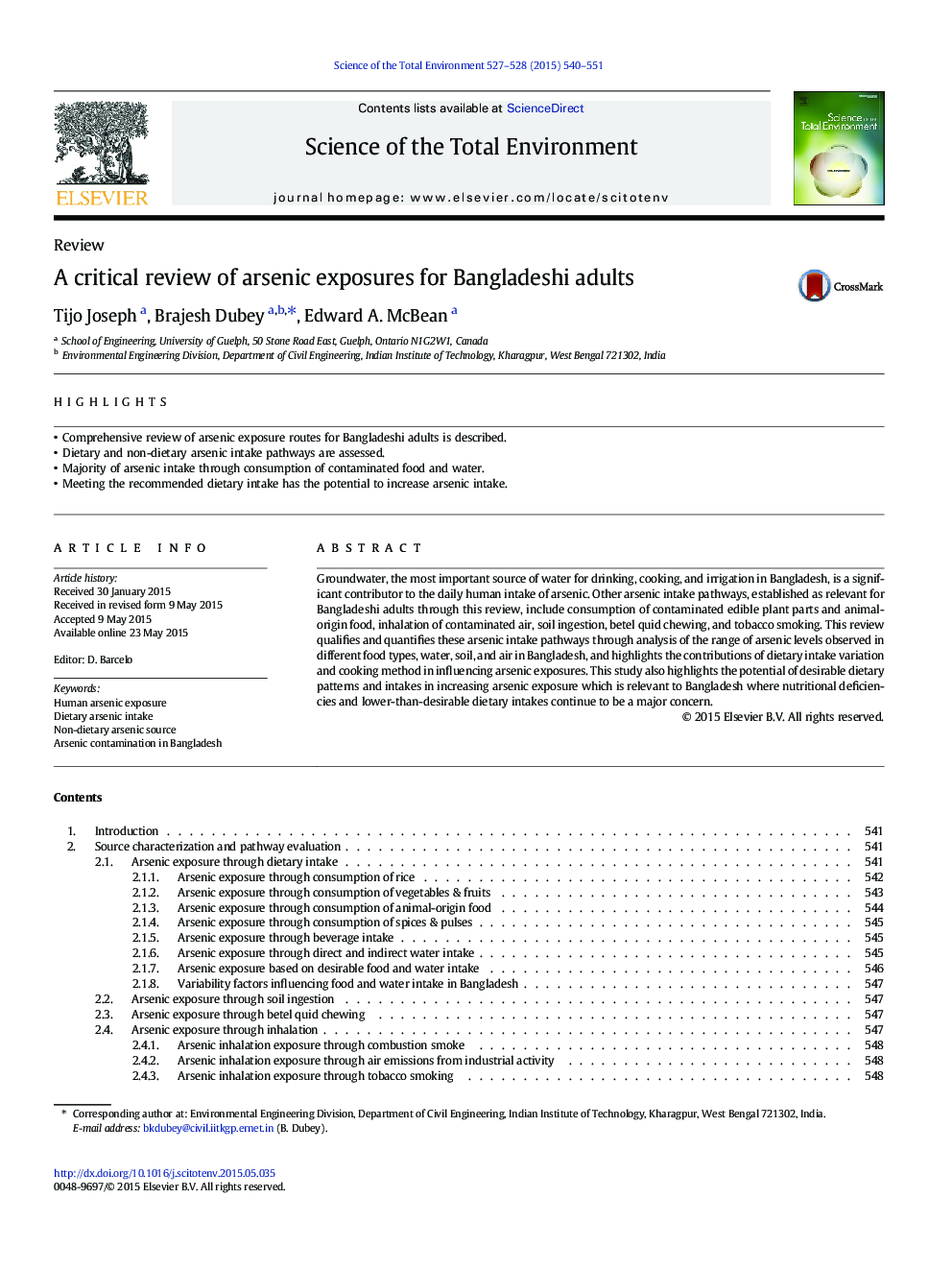| Article ID | Journal | Published Year | Pages | File Type |
|---|---|---|---|---|
| 6326544 | Science of The Total Environment | 2015 | 12 Pages |
Abstract
Groundwater, the most important source of water for drinking, cooking, and irrigation in Bangladesh, is a significant contributor to the daily human intake of arsenic. Other arsenic intake pathways, established as relevant for Bangladeshi adults through this review, include consumption of contaminated edible plant parts and animal-origin food, inhalation of contaminated air, soil ingestion, betel quid chewing, and tobacco smoking. This review qualifies and quantifies these arsenic intake pathways through analysis of the range of arsenic levels observed in different food types, water, soil, and air in Bangladesh, and highlights the contributions of dietary intake variation and cooking method in influencing arsenic exposures. This study also highlights the potential of desirable dietary patterns and intakes in increasing arsenic exposure which is relevant to Bangladesh where nutritional deficiencies and lower-than-desirable dietary intakes continue to be a major concern.
Related Topics
Life Sciences
Environmental Science
Environmental Chemistry
Authors
Tijo Joseph, Brajesh Dubey, Edward A. McBean,
